In this guide, you’ll learn various methods to create a clay material within ZBrush. The PDF guide explains not only how to build a MatCap and mix it with other shaders, but also how the sculpted details and treatment of the sculpt are very important factors to make a convincing effect.Some of the sketches in this post are not rendered with ZBrush BPR, but they were the catalyst for the construction of this guide.
Here is how this tutorial came about…
A few years ago, I got into the habit of creating quick sculpts in ZBrush as a way to ‘warm up’ for a longer session or larger projects. This practice was quite beneficial in many ways: It allowed me to test and practice different process very quickly, It was a space to play with forms without the need to finalise anything, and ultimately it led me to produce custom tools to speed up these type of ‘warm up’ sessions (see for instance the Multi-eye tool).
The quick sculpting sessions were purely for practice and to help me build the routine of working in ZBrush on a daily basis. After some time and practice, the quality on the speed sculpts started to improve, and I started to share some renders online. The ZBrush sculptures were done in an hour or so, so the actual sculpting was very very rough. So I started rendering the sketches with a clay material to preserve that ‘sketchy’ look and feel.
Here are some of the sketches I rendered with the clay look:

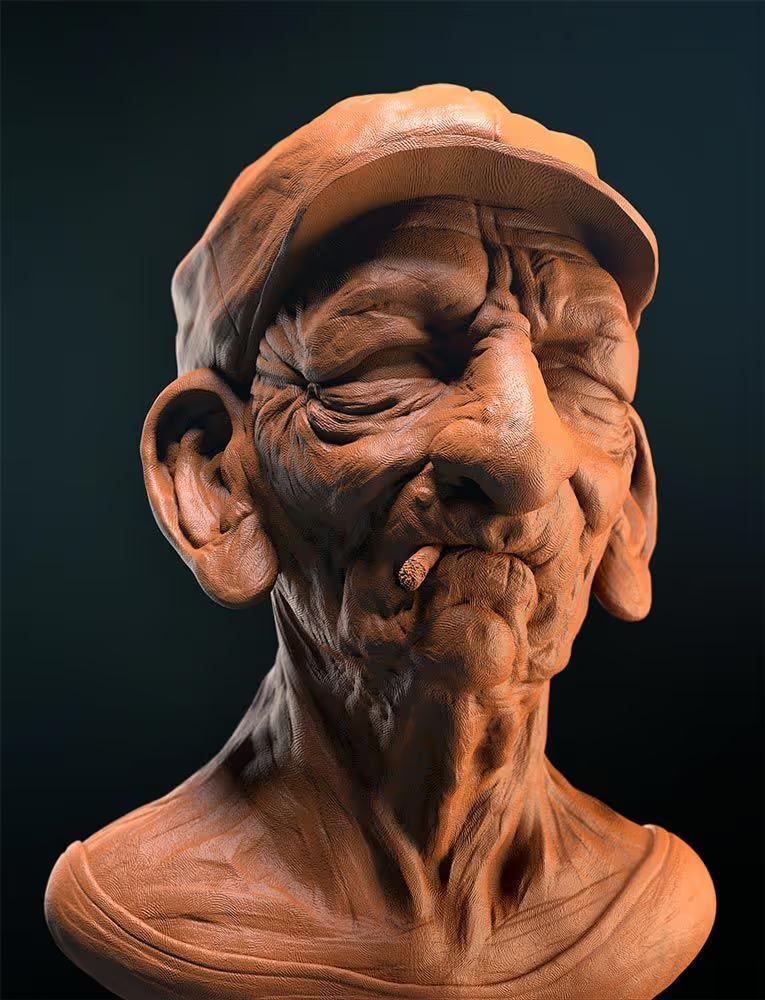

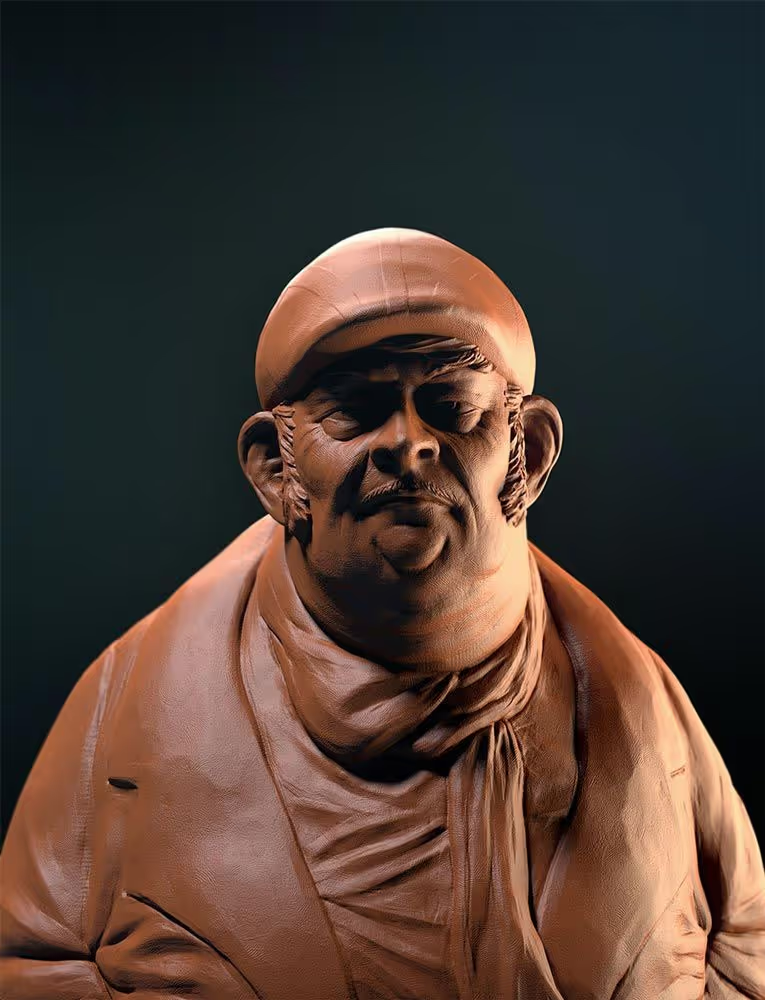
I got a few more clay sketches as well as alternative renders here in case you are curious
As I mentioned these are very rough sketches and I tried to be strict with my 1-hour time limit. For the most part, I kept the subtools to only 1 (sometimes 3 if you count the two eyeballs) and use Dyanamesh to freely explore shapes and designs. I also limited my set of brushes to the move brush and clay build up to block in the volumes. After the main shapes are ready, the process is all the same of refining the sketch with the clay brushes, Dam_standard brush and all the other ‘usual suspects’.
And, here are a couple of videos with a bit of the sculpting process:
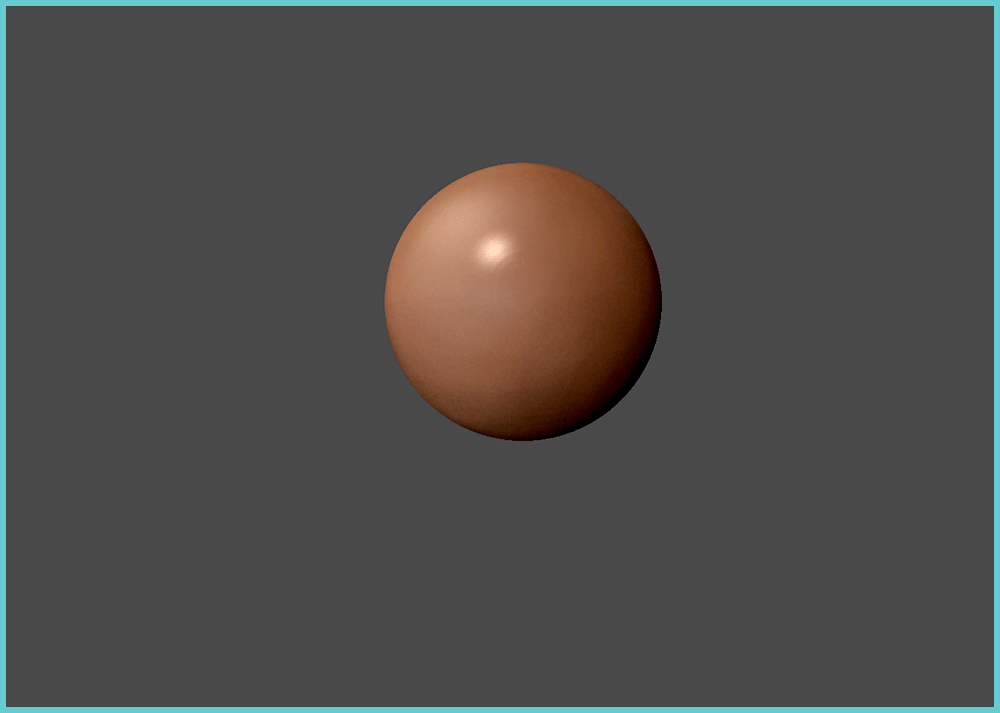
Revisiting quick sculpting sessions
Another great advantage of doing these type of sculpting sessions is that you can generate lots of ideas and you can come back at any time to revisit a concept that you liked.
That is exactly what I did with a sketch like ‘The Sailor’. I opened the ZTool and spend more time polishing the shapes and refining the sculpture. I then use this model to test another workflow for poly painting and rendering skin material in ZBrush.
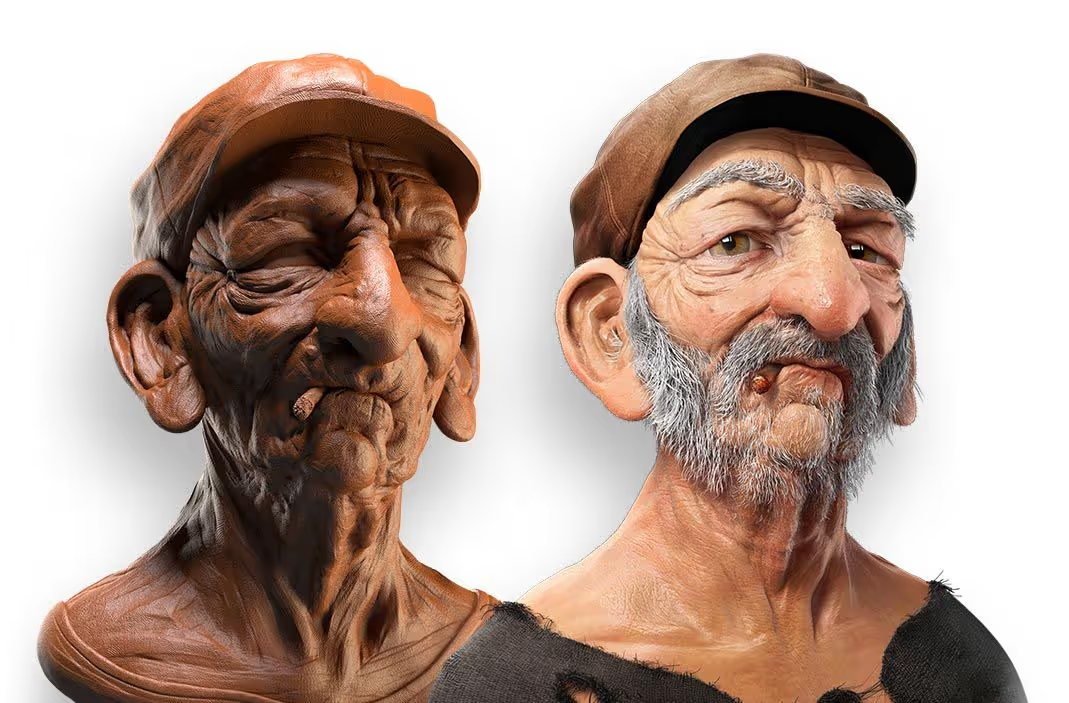
Clay sketches featured on the 3dcreative Magazine
If you want some more insight into the process of creating and sculpting these rough sketches of ‘clay’ there is an article in the 3D Creative magazine about them, where some of the Clay sketches were featured in the magazine (issue 105)

One of my favourites sketches, ‘The Janitor’, even made it to the cover!.
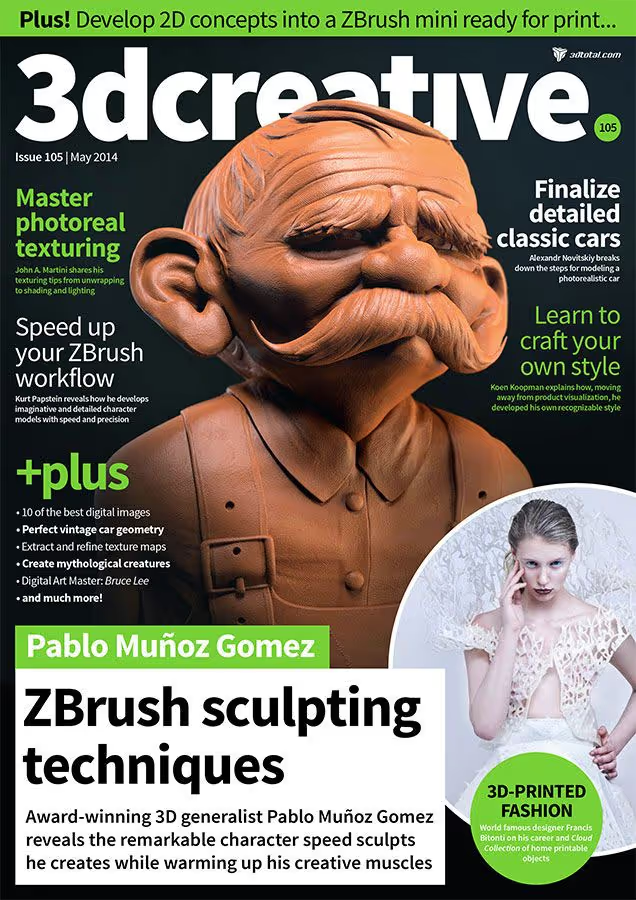

ZBrush Clay Render eBook
With this tutorial, you’ll learn how to create clay materials In ZBrush.We’ll look at various settings from the Material palette and the way that shaders mix with each other.
Check it out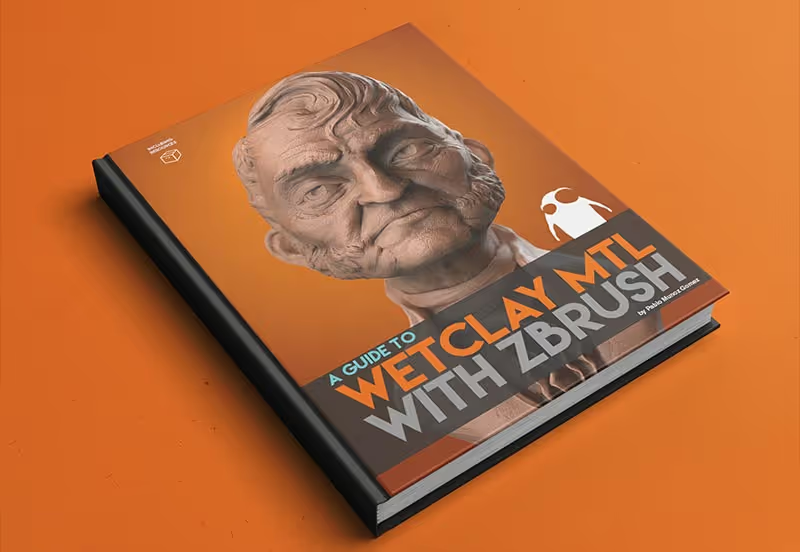
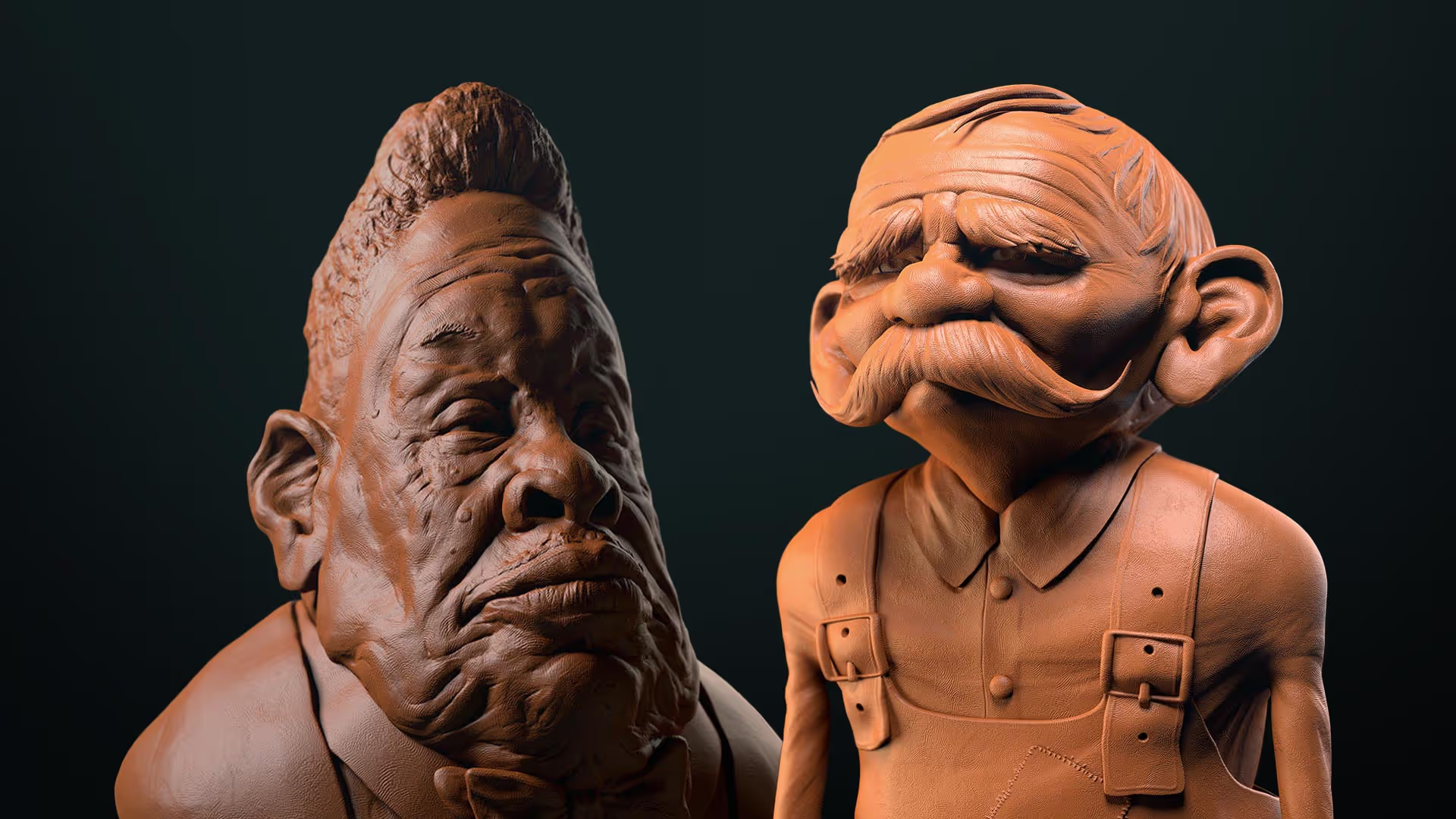







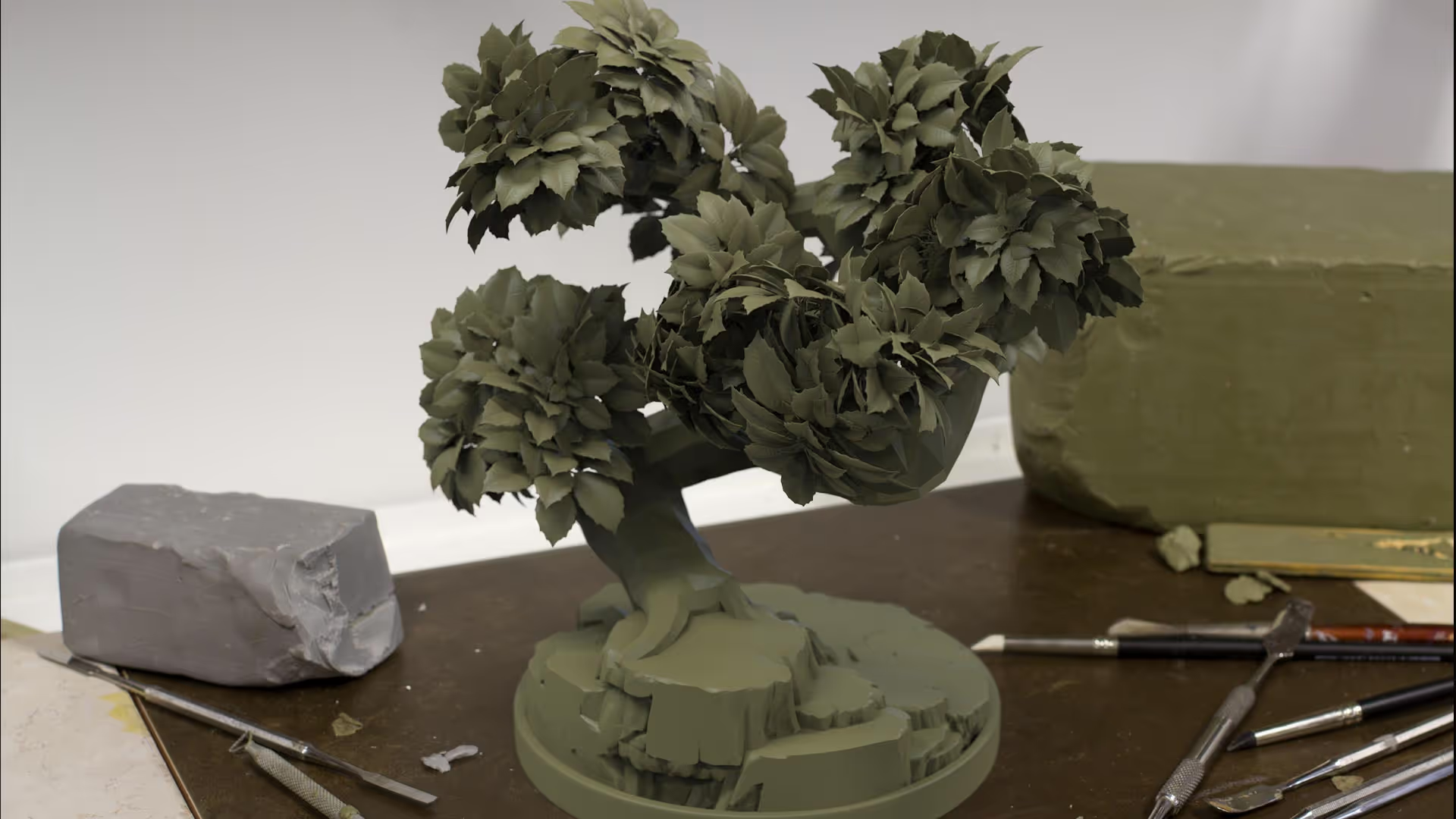
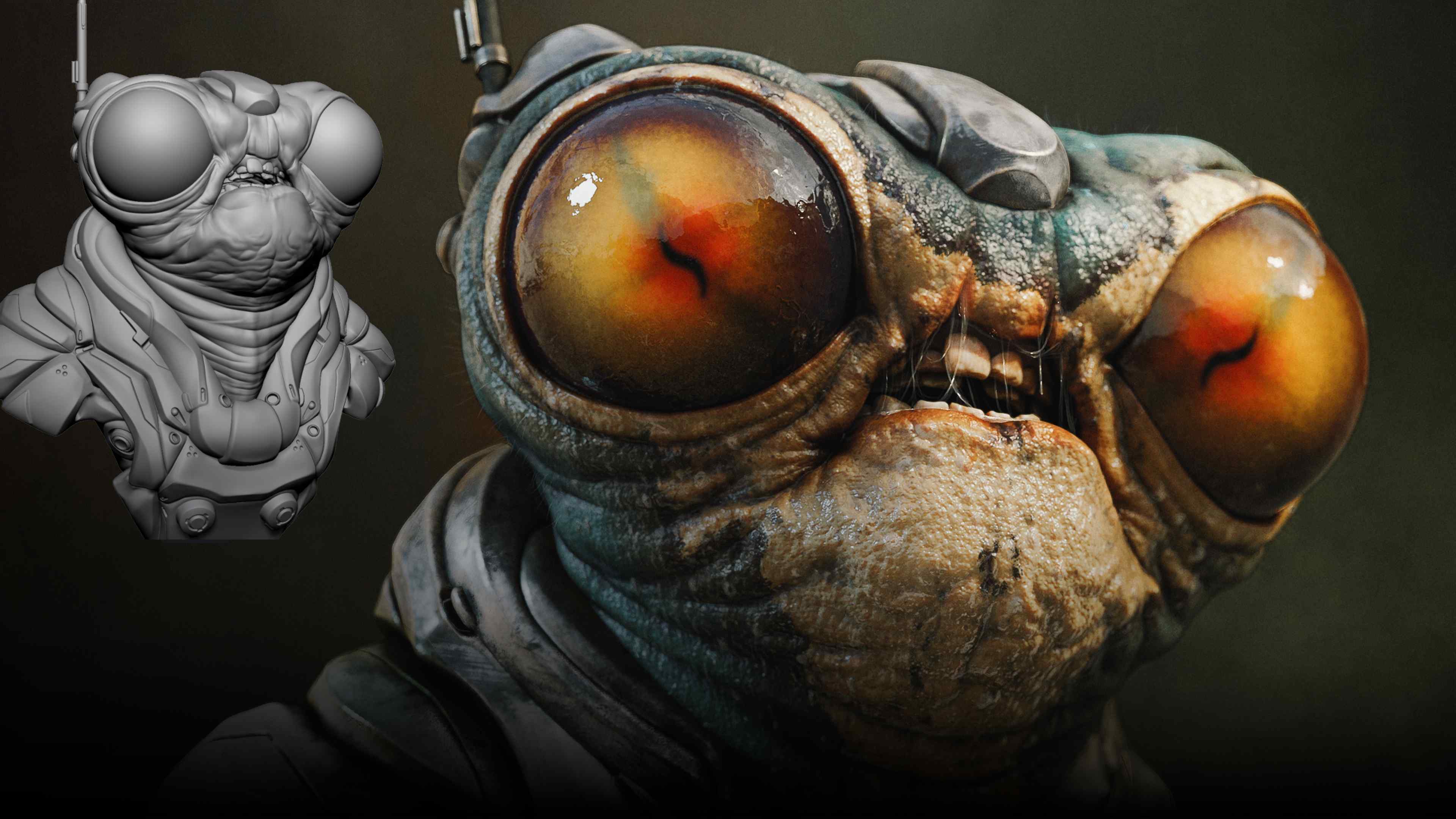
.jpg)
.jpg)